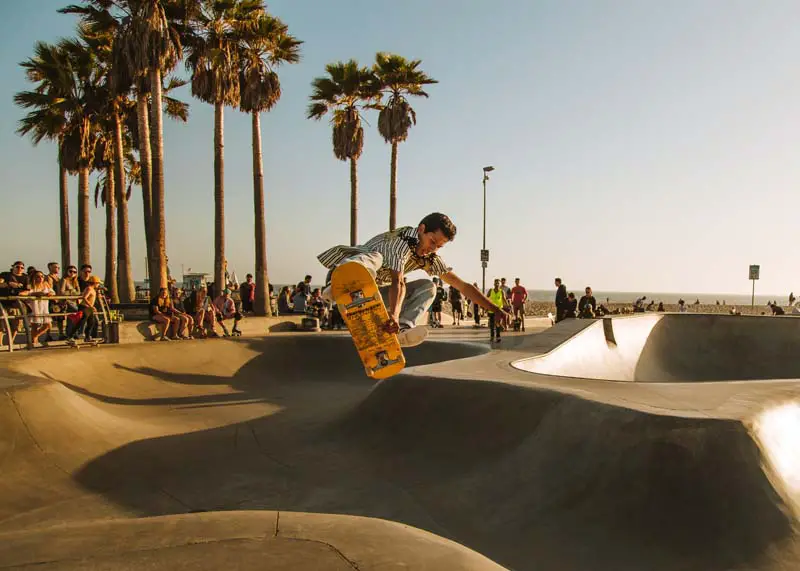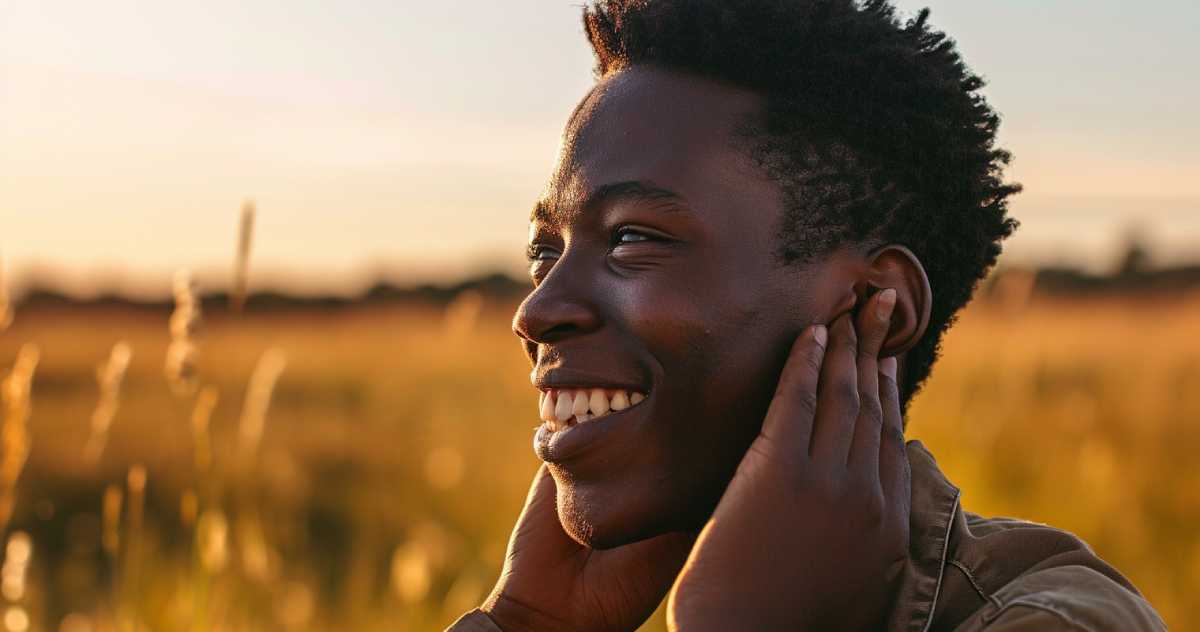Joint pain is widely prevalent. While pain can affect any joint in the body, in most cases, weight-bearing joints such as hips cause pain, discomfort, and stiffness. Numbers show that chronic hip pain in adults who play sports is 30% to 40%. In all adults over 60, the incidence of hip pain is 12% to 15%.
Pain in one hip, or both, can hurt your range of motion and quality of life. It’s manageable, though. Stimulating specific acupoints or regions on your feet can help you feel better. In this post, I will discuss reflexology for hip pain and find the acupuncture points for hip pain to alleviate the discomfort you’re experiencing.
What Are The Causes Of Hip Pain?
First, I’m going to discuss some of the most common reasons behind your hip pain. They include:
- Arthritis
- Hip fractures
- Bursitis (inflammation of bursae, i.e., sacs of liquid found between tissues such as muscles, bones, tendons)
- Tendinitis
- The strain of muscles or tendons
- Hip labral tear (rip in the ring of cartilage that follows the outside rim of the socket of the hip joint)
- Injuries such as dislocation
- Pinched nerves
- Vigorous physical activity
Tips #1: Pressure Points For Hip Pain
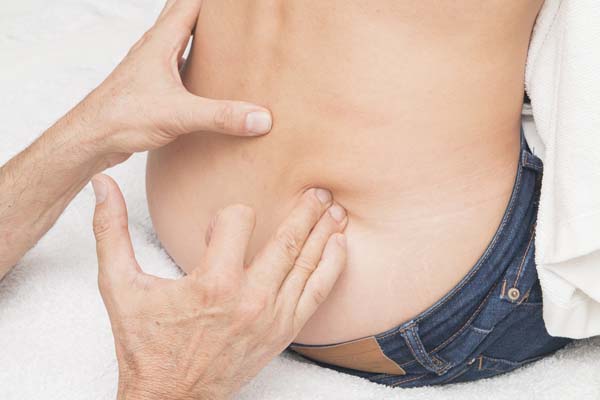 Hip pain doesn’t allow you to move appropriately, do everyday activities, and it’s easy to get stressed out. If you’re not the type of person who takes a pill to relieve pain all the time, then a holistic approach is the best option. Various natural methods can help alleviate hip pain, and massage is one of them. Massage encourages blood flow and produces a calming sensation, which enables you to tackle pain more effectively. Also, stimulating specific pressure points on your feet can lead to pain relief. This is where the reflexology chart steps in. The chart holds the secret to managing various health problems and other concerns by applying pressure on specific areas on your feet. Hip pain is no exception. Scroll down to see reflexology points for lower back pain and hip pain.
Hip pain doesn’t allow you to move appropriately, do everyday activities, and it’s easy to get stressed out. If you’re not the type of person who takes a pill to relieve pain all the time, then a holistic approach is the best option. Various natural methods can help alleviate hip pain, and massage is one of them. Massage encourages blood flow and produces a calming sensation, which enables you to tackle pain more effectively. Also, stimulating specific pressure points on your feet can lead to pain relief. This is where the reflexology chart steps in. The chart holds the secret to managing various health problems and other concerns by applying pressure on specific areas on your feet. Hip pain is no exception. Scroll down to see reflexology points for lower back pain and hip pain.
Acupoint: Bl-60 (Other Names: Urinary Bladder-60/Kun Lun/Kunlun Mountains)
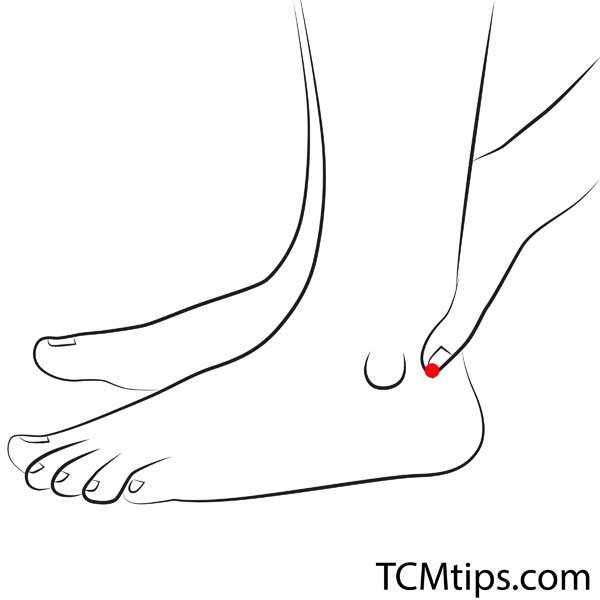
The Bl-60 acupressure point belongs to the bladder meridian. This pressure point is located on foot, behind the external malleolus, in the depression between the tip of the external malleolus and tendo calcaneus.
Let’s break down the location of this acupoint. Malleolus is the bony prominence on each side of your ankle. On the flip side, tendo calcaneus is popularly known as Achilles tendon, i.e., the thickest and strongest tendon in the body, and it’s located at the back of the lower back. In a depression between these two structures (Achilles tendon and outer anklebone), you will find Bl-60.
This acupressure point is the main point for pain anywhere along the spine. Activation of this pressure point helps alleviate pain in the lower back area, hips, and pain or numbness in lower limbs.
Benefits of stimulation of B60 also extend to the relief of neck pain, swelling, and pain in your heels, dizziness, and headache. Since activation of this pressure point may induce labor, it’s not advised for pregnant women, but it can help ease difficult labor.
Gently apply pressure in both legs using your fingers. Find the pressure point and massage it so that you feel the pressure, but also relaxation.
Acupoint: Bl-62 (Other Names: Urinary Bladder-62/Shen Mai/Extending Vessel )
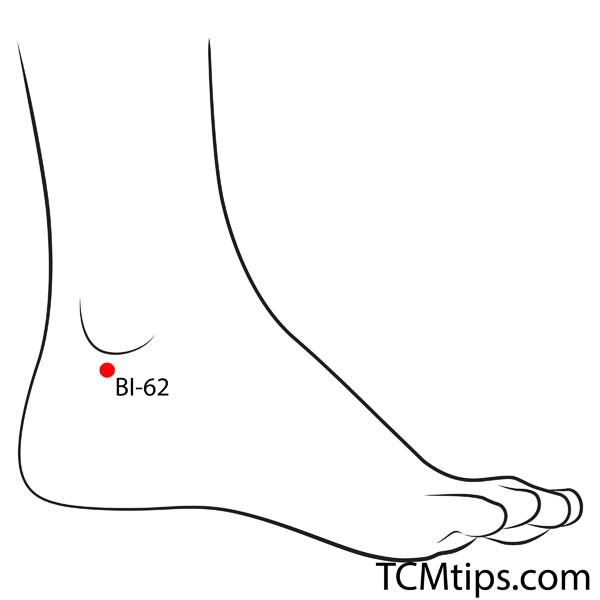
Applying pressure on acupoint Bl-62 can help alleviate pain in the lower back area, including your hips. Moreover, the benefits of stimulating Bl-62 also extend to helping with problems such as difficulty walking, spinal problems, stiffness of neck and shoulders, occipital headache, just to name a few. Occipital headache occurs due to injury or inflammation of occipital nerves running through the scalp.
Insomnia and nervousness are also fundamental problems you can alleviate by applying pressure on Bl-62. This is important because hip pain, significantly when intense and chronic, can disturb your sleep and increase nervousness levels.
Press Bl-62 acupoint hard with thumb for about a minute. Then release and count to 10 or 15. Repeat the same process four to five times before you do the same with the other foot. You can also use this part of the reflexology chart to massage this pressure point for more relaxation.
Acupoint: Liv-3 (Other Names: Liver-3/Tai Chong/Supreme Rush)
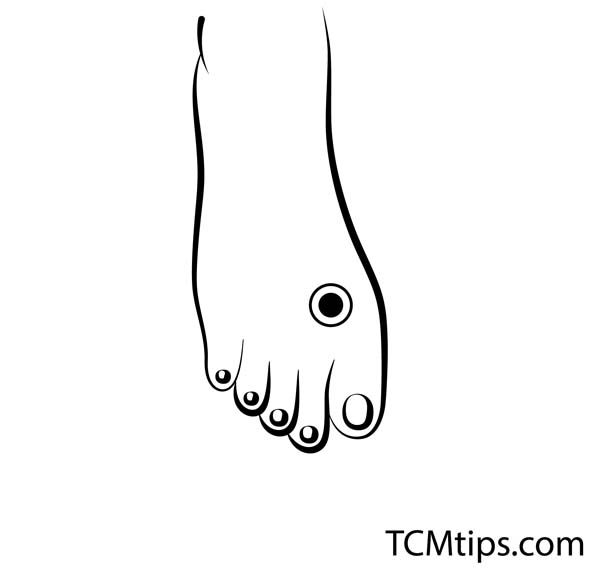
The pressure point Liv-3 is a part of the liver meridian. You will find this acupoint on foot approximately two finger widths above the place where the big toe and the second toe joint’s skin. More precisely, Liv-3 is about three inches from the tip of the big toe.
One of the most prominent benefits of Liv-3 is the prevention of stagnation in the body. By stimulating this pressure point on foot, you also tone Yin.
The benefits of stimulating Liv-3 acupoint are numerous, including treating lower back pain, stress, limb pain, headache, and dizziness, among other problems. Since Liv-3 is a calming point, it can help manage anxiety and irritability, both of which can quickly develop in the presence of intense and chronic hip pain.
To get the best results, you need to find and stimulate this acupoint by applying gentle pressure with the thumb. Hold the pressure for 30 seconds and then release it. Repeat this process three to four times before you do the same on the other foot. Make sure to do it every day.
Since this acupressure point is tender, you may want to apply medium to firm pressure if gentle pressure isn’t enough. However, you shouldn’t go overboard. Don’t be afraid to include your index finger too.
Acupoint: KI-3 (Other Names: Kidney-3/Tai Xi/Supreme Stream)
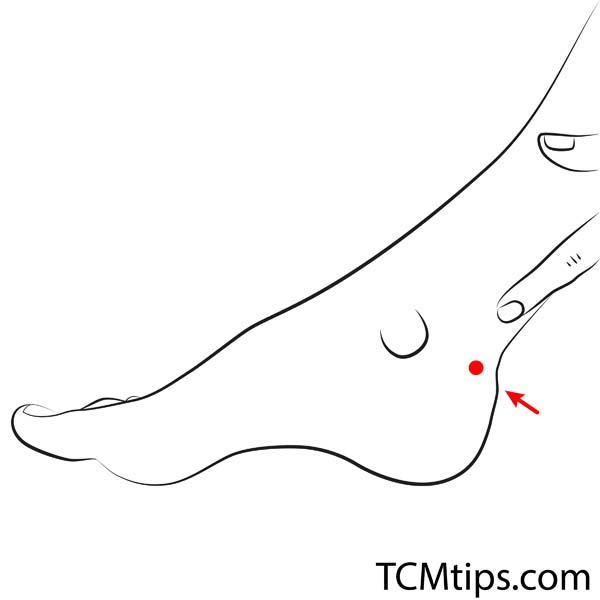
The KI-3 acupoint is the source of the kidney meridian. In traditional Chinese medicine, the kidney channel is related to the kidney organs and your life source energy. Stimulation of these pressure points improves your general well-being, which is why KD-3 is an integral part of reflexology for hip pain.
You will find KI-3 in a depression between the medial malleolus and the Achilles tendon. It is level with the medial malleolus tip, the bump that protrudes on the inner ankle’s er side.
Not only does the stimulation of KI-3 alleviate pain in the lower back, i.e., hip area, but it can also provide calmness and other benefits. Other effects of KI-3 activation range from chronic sore throat relief, dizziness, headache, tinnitus, anxiety, and insomnia to ankle pain.
Massage of this acupressure point relieves heaviness and pain from the joints in your body. Since hip pain can occur due to pressure and heaviness on the joint, e.g., due to excess weight, stimulation of this pressure point could be helpful.
Acupoint: KI-1 (Other Names: Kidney-1/Yong Quan/Gushing Spring)
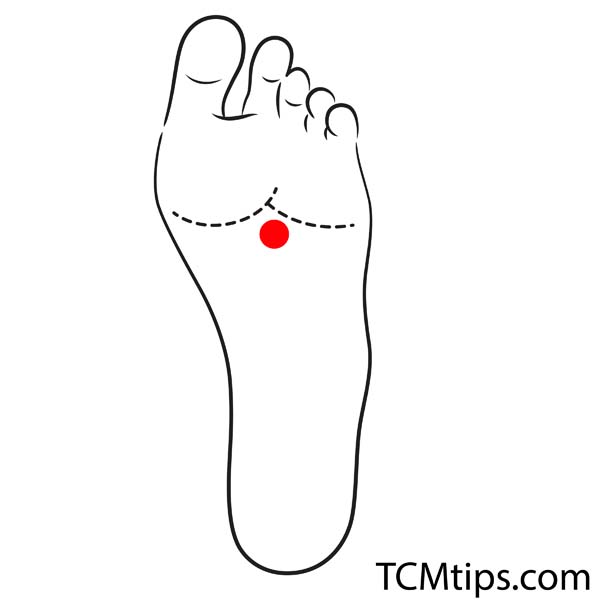
Acupressure point KI-1 is a part of the kidney channel and an essential acupoint in the body.
You will find this acupressure point on the sole, in depression when the foot is in plantar flexion (movement wherein top of the footpoints away from the leg). The specific location of KI-1 is at the anterior third and posterior two-thirds of the line from the web between the second and third toe on your foot.
Massage of KI-1 helps alleviate pain in the lower back area. It can also tackle hypertension (high blood pressure), epilepsy, headache, tinnitus, among other problems. You can also stimulate this acupoint for kidney health. Since pain caused by kidney problems can radiate and spread to your hips, massaging this pressure point is a practical way to alleviate aches and promote kidney health and energy levels.
Tips #2: Foot Reflexology For Hip Pain
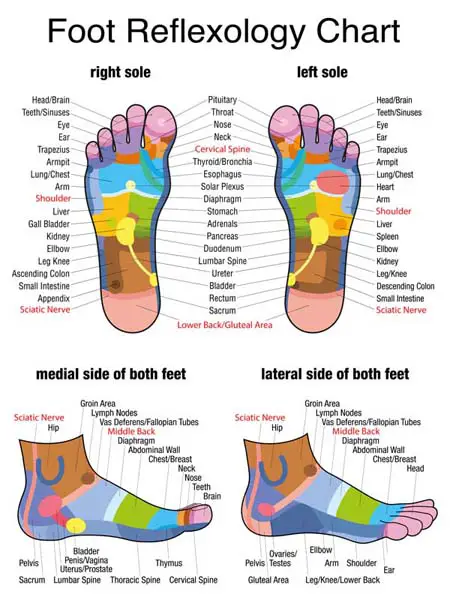
Stimulation probably makes you think of acupuncture, but massage is the easiest and fastest thing you can do on your own. What’s so special about massage in foot reflexology for hip pain?
The importance of massage is often underestimated, in my opinion, but it’s never too late to change things around. Massage improves blood flow and provides relaxation, both of which are important for pain relief. This is especially the case when you “hit the right spots.” I found the foot reflexology chart extremely helpful as it allowed me to stimulate the right parts of my feet to alleviate pain and feel much better.
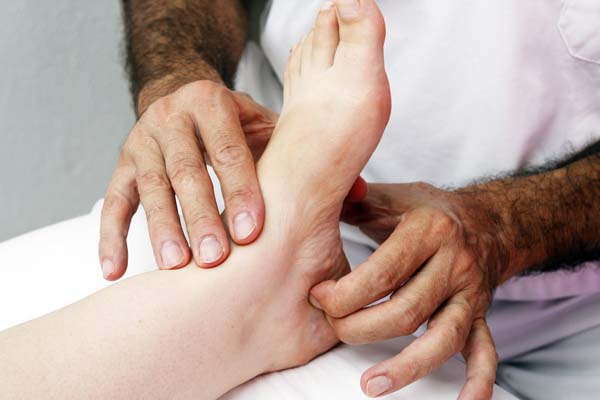
The same goes for the point in the upper area of the sole, close to the toes. While fingers can do a great job in applying pressure, I found several massagers incredibly convenient to provide much-needed relaxation and support.
Tips #3: Foot Massager
Besides applying pressure with thumb and index finger on this post’s pressure points, you can also use an excellent massager. These devices provide relaxation and pain relief and allow you to get a quality massage on your own. of course, it all comes down to the quality of a massager you choose, and below I’m going to focus on three kinds.
Naipo Shiatsu Foot Massager with Heat
Naipo foot massager is a portable and powerful little unit with switchable heat and adjustable massage modes. Not only does it helps alleviate pain and problems affecting feet, but it also relieves stress and anxiety in the whole body. The powerful massage you receive on your feet will also stimulate some of the pressure points mentioned above if you position them correctly. A total of 18 kneading nodes target acupuncture points on your feet to stimulate blood flow and provide a deep kneading massage.
The machine’s center holds a unique resin massage ball that allows you to move foot on it to get a 360° rotation massage. The breathable fabric of the machine will enable the feet to breathe. The whole unit is easy to use and operate.
Miko Shiatsu Foot Massager
Miko foot massager comes with a wireless remote so you can adjust the massage preferences without having to move from your comfortable seat. Keeping in mind that remotes are easily lost, Miko massager comes with a spare remote too. Nice touch! Deep-kneading, Shiatsu rolling, and heat massage improve blood flow and help you rest and relax tired feet. The massager consists of two independent foot chambers and five air pressure settings.
What happens when feet are in those compartments? The adjustable air compression surrounds my feet with the right amount of pressure (which I set using a remote). This improves my blood flow and alleviates tension. I can feel a wave of relaxation washing over me. The Shiatsu massager targets pressure points on my feet, which is precisely why it’s the perfect companion for a foot reflexology chart. Based on what I want to achieve, e.g., to alleviate hip pain or pain in the lower back, I can just use this massager to act on those pressure points. I also want to remind you that you can use a reflexology chart for other problems such as lack of sleep or gastrointestinal disturbances, and kidney issues.
Miko Foot Massager with Acupressure Technology
Yugen is a famous foot massager model from Miko, and it’s ideal for people with small to medium-sized feet. At the same time, this is a slight disadvantage because people with big feet won’t get the most out of the massager and its versatile effects. Yugen massager features acupressure nodes that specifically target pressure points on your feet. Upon the stimulation of these acupoints, the massager boosts energy levels, increases calmness, and improves blood flow. The heating wire technology ensures your feet are warm to stimulate blood flow and recovery. The adjustable air compression allows for increasing or decreasing the pressure massage at the touch of a button. The elegant yet ergonomic design of a foot massager supports your feet’ shape and structure to stimulate acupressure points adequately for an improved energy flow.
Conclusion
People experience hip pain due to several reasons. Besides pain, you may also experience general discomfort and stiffness. Quality of life suffers significantly in the presence of hip pain and limited flexibility and range of motion. Fortunately, stimulation of specific acupressure points on your feet can help relieve pain and boost your energy levels.
In this post, you’ve had the opportunity to learn about reflexology for hip pain and where exactly to press to experience pain relief in the hips and lower back area. The more you know about the foot reflexology chart, the easier it will be to manage various health problems by stimulating the acupuncture points for hip pain. Used for centuries in traditional Chinese medicine, this approach relies on your body to heal itself just by applying pressure on specific places.
Photo by Josh Hild from Pexels

Try our Anti-Aging Gua Sha Tool designed to bring out your skin’s natural glow.
Best Gua Sha Product- Anti-Aging: The tool is designed to target 11 specific aging signs such as wrinkles and sagging skin. By following the 7-step routine, users can improve skin firmness and reduce fine lines naturally.
- Enhances Skincare Routine: It works effectively with serums and lotions, boosting absorption and efficacy of skincare products.
- Visible Skin Improvement: Users can expect a smoother complexion, reduced puffiness, and a more youthful appearance.
 P. Sze
P. Sze 